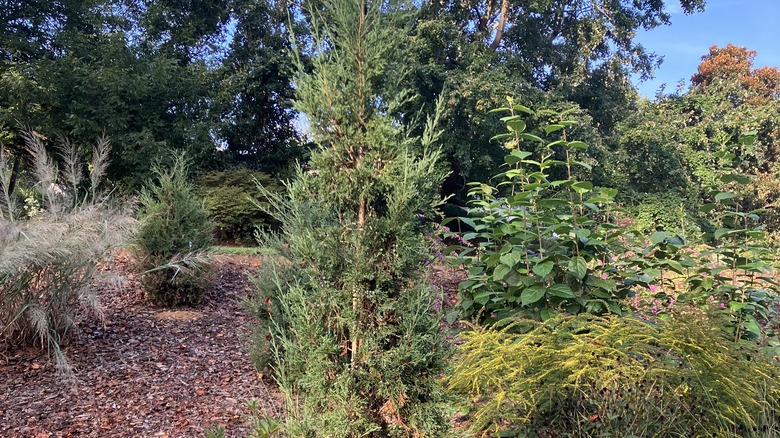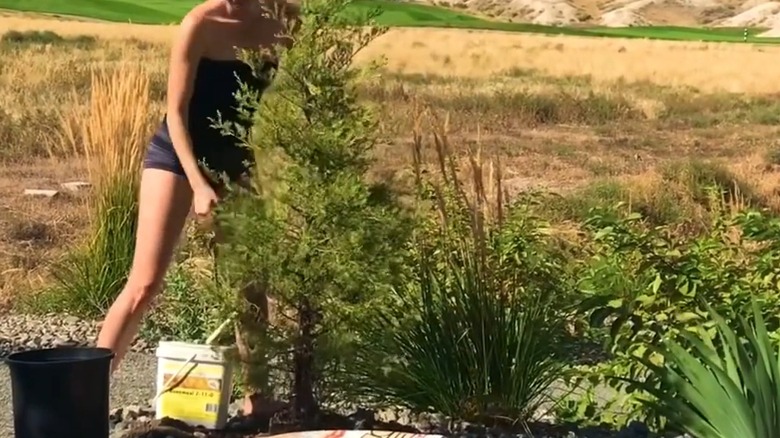Common Mistakes Everyone Makes When Growing Taylor Juniper Trees
Taylor juniper (Juniperus virginiana 'Taylor') trees almost feel tailor-made for all the awkward places plaguing modern yards. Their 3-foot-wide, slender frames easily tuck in narrow spaces, unifying the green property line or windbreaks. Other times, they add vertical contrast to a pancake-flat landscape with their 20-foot-tall, columnar form. Better yet, they're ideal for flanking walkways, entrances, and patios. Best of all, they recall Tuscan landscaping and gardens in light of their bluish-green foliage Mediterranean-passing for Italian cypress trees. Sadly, the endeavor of planting a fast-growing Taylor juniper tree for outdoor privacy isn't one without mistakes, with plenty missing the mark on the right location and growth conditions.
'Taylor' is a cultivar of eastern red cedar (Juniperus virginiana), the lone juniper species found on the Mississippi River's east, besides being native to certain central and eastern U.S. parts. However, this straight species is labeled invasive in Oregon, discouraging its active planting in that state. Although Taylor doesn't produce flowers or fruits (it's a male cultivar), lowering its invasive potential, the propensity of eastern red cedar trees to cross-hybridize with their brethren doesn't fully eliminate the intrusive risk.
Avoid these mistakes while growing juniper trees
Taylor juniper trees are unforgiving about sun exposure. They require a minimum of six hours of direct sunlight to maintain their silverish-blue façade and density — anything less and they would begin thinning. While growing them as evergreen hedges, ensure all sides are adequately sun-lit. Another mistake to avoid is siting Taylor juniper trees in waterlogged soils. For them to brave lean depths, sandy dry substrates, alkalinity, or clay textures, good drainage is a must. Plus, they'd much rather grow in impoverished soils. As such, Taylor juniper trees are fast growers. But when they're plonked in heavily fertilized or organically rich soils, they grow exceedingly faster, harming their true form and vitality. To avoid such an outcome, position them in sunny, average sites and limit fertilization or organic amendments to once in early spring.
Many gardeners also falter in meeting their Taylor juniper trees' watering requirements. While these evergreens can certainly withstand drought stress, such endurance kicks in only after they've established themselves in your yard. So, water them deeply (down to 2 inches) in the initial two planting years to enable deeper root penetration and taper the supply henceforth. Don't make the mistake of growing Taylor juniper trees alongside apple or crabapple trees. That's because they're susceptible to cedar apple rust, which will destroy your crop while leaving the evergreen unsightly. Also, watch out for bagworms every May, or they might leave the foliage in shambles.

